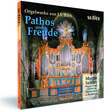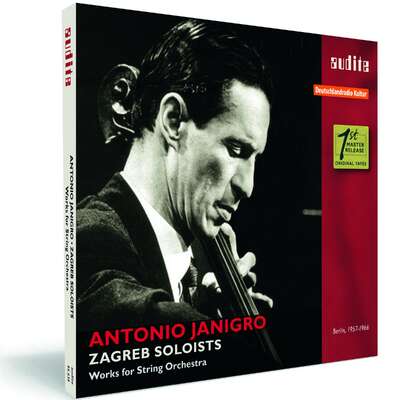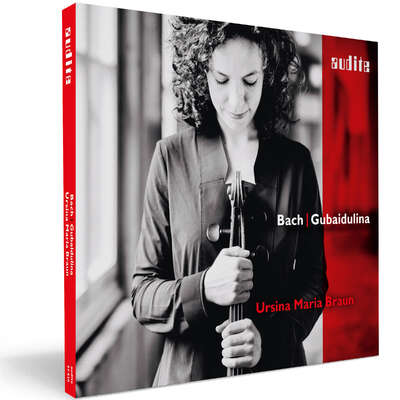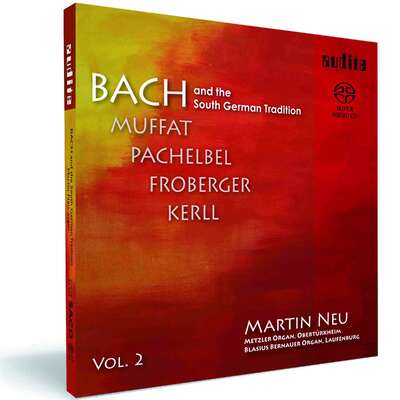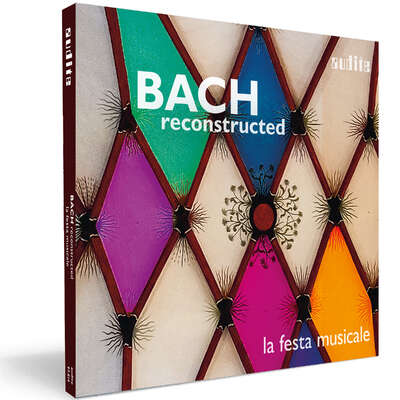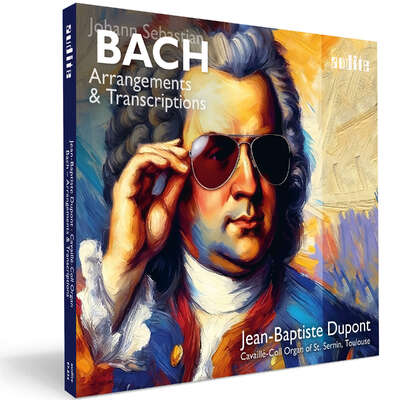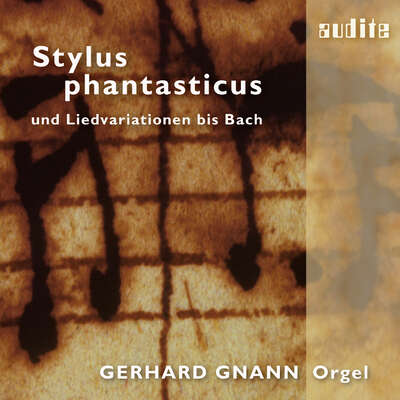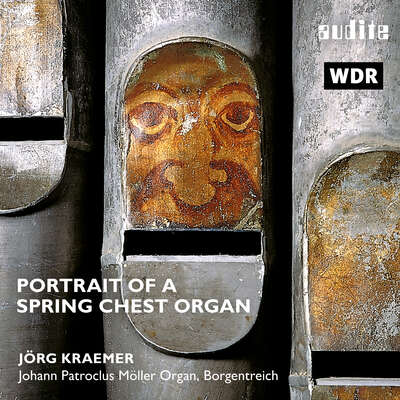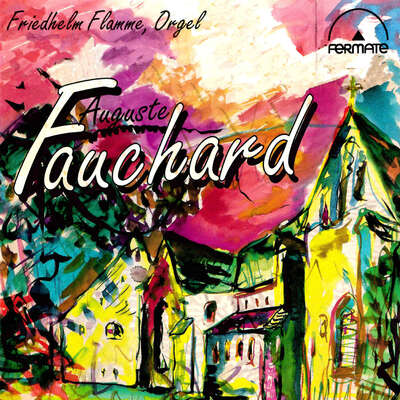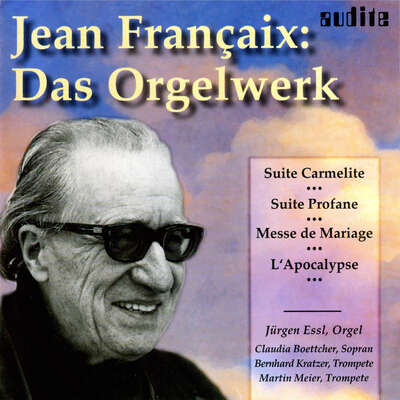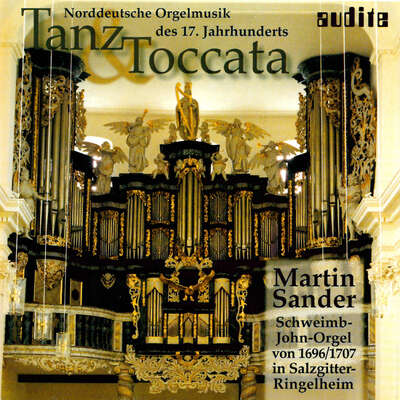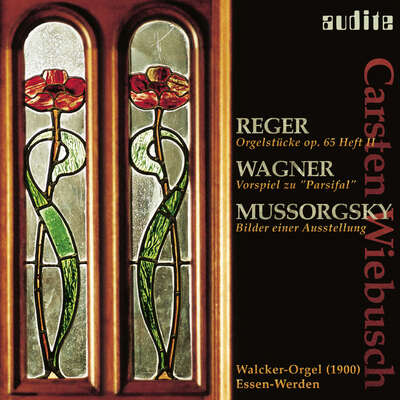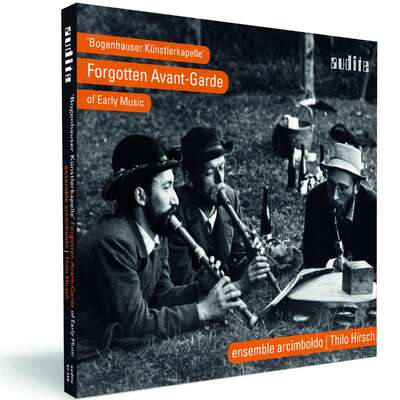
This CD presents a selection of important works from different genres by J S Bach . Martin U. Sander reveals an impressive understanding of how to bring the baroque organ to life. The verve and virtuosity of Vivaldi's orchestral works are thus equally noticeable in Bach's organ arrangements. In the...more
"[...] he plays with flair, understanding, and complete technical security. Sander’s HIP-aware interpretations are thoughtful, stylish, and imaginative, and his phrasing and legato are superb [...]" (Newsletter of the American Bach Society)
Details
| Pathos & Freude - Organ Works by J.S. Bach | |
| article number: | 20.028 |
|---|---|
| EAN barcode: | 4022143200280 |
| price group: | BCA |
| release date: | 20. February 2009 |
| total time: | 64 min. |
Informationen
This CD presents a selection of important works from different genres by J S Bach. Martin U. Sander reveals an impressive understanding of how to bring the baroque organ to life. The verve and virtuosity of Vivaldi's orchestral works are thus equally noticeable in Bach's organ arrangements. In the second movement of the trio sonata, Sander masters the imaginative ornamentations in the chamber music style of the time which other interpreters often avoid due to their immense complexity. In the Prelude - one of Bach's most remarkable and magnificent pieces - he uses the glorious and yet transparent full texture of the Wagner Organ with celebratory, vigorous joy.
The Wagner Organ dates back to the late baroque era and is housed in the Nidaros Cathedral in Trondheim (Norway). The cathedral also accommodates the tombs of the first Christian Viking kings and continues to serve as the coronation church of Norwegian royalty. The organ was delivered to Trondheim around 1740 by the organ builder Joachim Wagner. Having been evacuated shortly before the Second World War and stored for many years in the cellar of the cathedral, the organ was reassembled and fully restored only a few years ago. Whilst most other instruments which were made by Wagner - who knew the Bach family well and was known as the "Silbermann of the Mark Brandenburg" - were modified insensitively or destroyed by war, this, one of his most important works is now housed, in outstanding condition, in the Norwegian "national treasure" of the Nidaros Cathedral and allows us to hear Bach's music as he might have heard it himself.
Martin U. Sander often appears as a soloist in concerts and is also Professor of organ in Heidelberg and Basel. He regularly gives masterclasses at home and abroad and adjudicates at international competitions. Winning prestigious awards at national and international organ competitions played an important part in paving his way as a concert artist. Martin U. Sander has performed with leading orchestras and at major music festivals both at home and abroad.
Reviews
Katolsk Tidning | 4. september 2009 | Kaj Engelhart | September 4, 2009 Den fantastiska stilen på orgel
"Stylus phantasticus" – den fantastiska stilen – var en nyhet som komMehr lesen
Newsletter of the American Bach Society | Spring 2003 | Teri Noel Towe | March 1, 2003
[...] he plays with flair, understanding, and complete technical security. Sander’s HIP-aware interpretations are thoughtful, stylish, and imaginative, and his phrasing and legato are superb [...]Mehr lesen
Magazine de l'Orgue | Numéro 53 | Jean Ferrard | February 1, 1999
A la première écoute de ce CD, j’ai eu le petit frisson qui augureMehr lesen
Fono Forum | 1/1999 | Herbert Glossner | January 1, 1999 Bach erster Klasse
Auch wenn der Titel „Pathos und Freude“ auf den ersten Blick allzu populär wirkt – die Ausführungen über die barocke Affektenlehre im BeiheftMehr lesen
Nicht gehetzt, nicht schleppend, aber mit „drive“ widmet er sich den überlegt miteinander korrespondierenden Eckwerken, der c-Moll-Passacaglia und dem Es-Dur-Präludium samt deren imposanten Fugen, in denen der Baß mit Posaune 16' wunderbar zeichnet. Spielerische Leichtigkeit kommt im d-Moll-Concerto nach Vivaldi und der ersten Triosonate Es-Dur, auch sie in den Tonarten auf den Kontext abgestimmt, zur Geltung. Und wenn schon kein Bach-Recital ohne Choralbearbeitungen auskommt, so dokumentiert Martin Sander mit dem dorischen Grundcharakter der alten Adventsmelodie „Nun komm', der Heiden Heiland“ noch einmal die harmonische Stringenz des ganzen Programms.
Bei so vielen Vorzügen fallen kleine Schönheitsfehler kaum ins Gewicht, beispielsweise der klanglich nicht recht gelungene Übergang vom zweiten zum dritten Teil der Es-Dur-Fuge.
